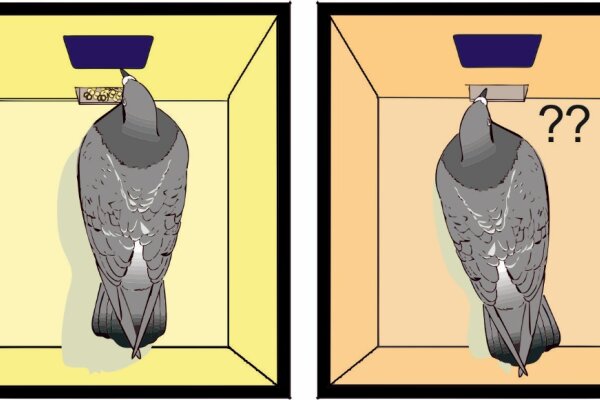2018-05-02

As it is well known to the avian scientific community, a small sector in the avian posterior ventral telencephalon encompasses inextricably intertwined subnuclei which are identified as being of amygdaloid (amygdala) or of somatomotor (arcopallium) nature. Within the SFB 1280, we scrutinized the functional roles of the avian amygdala and the premotor arcopallium in the course of appetitive extinction learning. Since extinction learning is crucially involved in the ability to flexibly acclimatize to the incessantly changing environment which is indispensable for the survival of living organisms, it is of great importance to comprehend the invariant properties of the neural basis of extinction learning. Therefore, we recruited pigeons as our animal model and locally blocked the NMDARs in the avian amygdala and the arcopallium prior to extinction training. We found out that the encoding of extinction memory entailed the activation of amygdaloid NMDARs, while the arcopallial NMDARs were engaged in the consolidation and subsequent retrieval of extinction memory. Furthermore, rendering inactivation in the premotor arcopallium also prompted a general perturbation in the motoric output. The double dissociation between arcopallium and amygdala discerned in the study imparts new insights on the two key components of the avian extinction network. Importantly, the resemblance of our results to the data procured from mammals indicates a shared neural mechanism underlying extinction learning moulded by evolution.
Gao, M., Lengersdorf, D., Stüttgen, M. C., & Güntürkün, O. (2018). NMDA receptors in the avian amygdala and the premotor arcopallium mediate distinct aspects of appetitive extinction learning. Behavioural Brain Research, 343(January), 71–82. https://doi.org/10.1016/j.bbr.2018.01.026

As it is well known to the avian scientific community, a small sector in the avian posterior ventral telencephalon encompasses inextricably intertwined subnuclei which are identified as being of amygdaloid (amygdala) or of somatomotor (arcopallium) nature. Within the SFB 1280, we scrutinized the functional roles of the avian amygdala and the premotor arcopallium in the course of appetitive extinction learning. Since extinction learning is crucially involved in the ability to flexibly acclimatize to the incessantly changing environment which is indispensable for the survival of living organisms, it is of great importance to comprehend the invariant properties of the neural basis of extinction learning. Therefore, we recruited pigeons as our animal model and locally blocked the NMDARs in the avian amygdala and the arcopallium prior to extinction training. We found out that the encoding of extinction memory entailed the activation of amygdaloid NMDARs, while the arcopallial NMDARs were engaged in the consolidation and subsequent retrieval of extinction memory. Furthermore, rendering inactivation in the premotor arcopallium also prompted a general perturbation in the motoric output. The double dissociation between arcopallium and amygdala discerned in the study imparts new insights on the two key components of the avian extinction network. Importantly, the resemblance of our results to the data procured from mammals indicates a shared neural mechanism underlying extinction learning moulded by evolution.
Gao, M., Lengersdorf, D., Stüttgen, M. C., & Güntürkün, O. (2018). NMDA receptors in the avian amygdala and the premotor arcopallium mediate distinct aspects of appetitive extinction learning. Behavioural Brain Research, 343(January), 71–82. https://doi.org/10.1016/j.bbr.2018.01.026